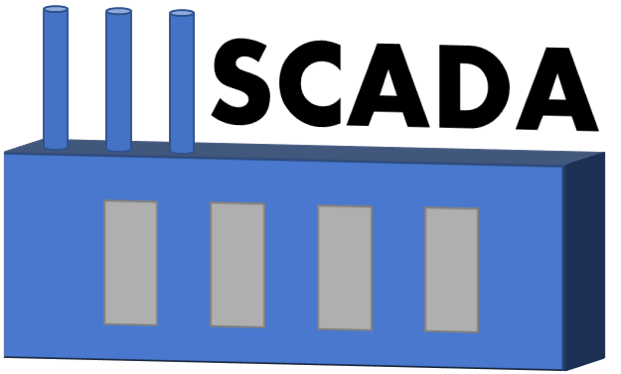
Industrial Networking and Automation: Terminology, Part 4 (Control Systems, SCADA)
By Tom Carpenter On 03/24/2021
Supervisory Control and Data Acquisition (SCADA) is a control system that can be used for monitoring and controlling industrial (and other) equipment. This article explains the basic capabilities of SCADA systems.
One of the key early features of SCADA systems was remote control and monitoring. For example, a sea station could be monitored from land over a satellite connection. SCADA systems are a combination of hardware (PLCs, HMIs, RTUs, sensors, actuators, interfaces, cabling, radios, etc.) and software. Many SCADA software packages are available, but the most popular include AVEVA (formerly Wonderware), Rockwell WinTr, PCVue SCADA, and Siemens SIMADIC.
SCADA systems aggregate data and control related to PLCs and RTUs that are then connected to sensors and actuators (and sometimes more complex aggregated devices). Because SCADA systems aggregate data from multiple sources, decisions related to one component can be made based on the state of other components, which is more challenging with traditional PLCs and RTUs alone (though the line is more blurred today).
An entire industrial automation solution may include sensors and actuators reporting to a PLC or RTU. Field HMIs may be available for engineers and staff to monitor the system locally and even provide control input. The PLC or RTU feeds the data back to the SCADA system where central monitoring and control is available and complex logic can be used to make important decisions.
If you've studied for the CWISA exam, you know that a decision must be made about control of wireless IoT devices. This decision includes the possibilities of the edge, somewhere in the middle (fog or local servers), or centralized (cloud or enterprise servers). When a near instant decision must be made for safety or defect reduction, edge processing is important. While network latency is reduced more each year, many decisions can still be made at the edge and should be. Other decisions are made for the next hour, day, week, or month based on the sensed information. These decisions can happen just about anywhere on the network - local or remote.
The primary benefit of a SCADA systems is that, typically, PLCs and RTUs are onsite. This results in the need for onsite visits to reprogram them or potentially even to monitor them. While other remote control and monitoring options may be available, the SCADA solutions are most commonly used to gain access to these remote industrial solutions (think, electrical power grid components, oil and gas pipelines, sea stations, or any other remote system that may require control).
Modern SCADA systems integrate with standard enterprise databases, such as SQL Server and Oracle, and even allow for web-based access. APIs may be available for programmatic access into the SCADA system or direct access to data stores may be used to integrate the solution with the enterprise environment.
Ultimately, a good SCADA solution will provide for data acquisition (as the name implies), network data transfer, data representation (for inter-system compatibility), and control. To accomplish this, you implement sensors and PLCs/RTUs, network connections, and SCADA software respectively.
Again, if you've studied for the CWISA, CWIIP, CWICP, or CWIDP exams, you are familiar with the Industrial IoT concept and have likely seen the similarities. An IoT sensor communicates with a gateway/controller/coordinator (like the PLC or RTU) and the data is passed on through the network, often using something like a broker (like MQTT servers), to get the data to the enterprise system (like the SCADA solution). The beauty of IIoT today is that SCADA solutions and modern wireless IIoT solutions can easily coexist. Data from the SCADA system and the wireless IIoT systems can be integrated using common protocols, languages, and databases to provide for a complete view of the systems while taking advantage of the most advanced IoT options available.
Tagged with: Supervisory Control and Data Acquisition, SCADA, control system, monitor, control, industrial, IoT, IIoT
Blog Disclaimer: The opinions expressed within these blog posts are solely the author’s and do not reflect the opinions and beliefs of the Certitrek, CWNP or its affiliates.



